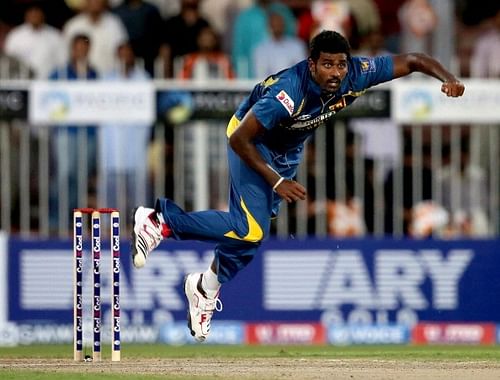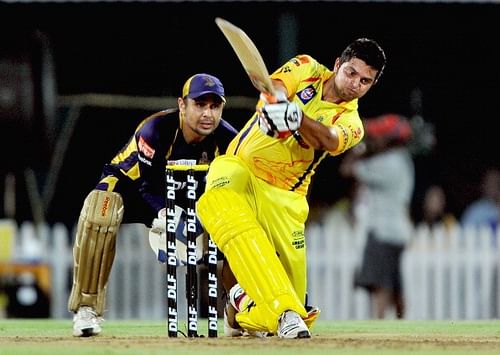
Why Indian players should be allowed to play in T20 leagues other than the IPL
Picture this headline in an Australian daily - “Raina’s whirlwind hundred wins it for the Perth Scorchers”.
Without batting an eyelid, the Indian Cricket fan would recognize the hoax. While Suresh Raina is prolific with the bat for Chennai Super Kings in the IPL, his T20 adventures are limited to his outings in the Indian Premier League and in international matches for India. For a southpaw with over six thousand runs in T20 Cricket, the Australian Big Bash T20 event could prove to be a mouthwatering prospect.
Alas, for reasons as murky as the storm water drains in India’s metros, Raina’s domestic T20 exploits remain confined to the IPL.
From online forums to canteen conversations across offices, fans have for long popped the question – why aren’t Indian players allowed to play in T20 leagues overseas? And the din only gets stronger when the Indian camp returns home battered and bruised from tours in South Africa, England, and Australia. From “slow Indian pitches” to “an inability to adapt to seaming conditions”, analogies aplenty pinpoint the Indian aversion to foreign conditions, regardless of the format.
The solution, however, seems rather straightforward and unanimous – send our cricketers overseas more often.
For long, County Cricket has been the university where players flock for cricketing “higher studies”. And it has borne results. From Bishan Singh Bedi and Kapil Dev to Rahul Dravid and Harbhajan Singh – County Cricket has fine-tuned the skills of many an Indian cricketer.
A murky denial
But it’s this seemingly straightforward solution that is caught up in the quagmire that surrounds the administration in Indian Cricket. While the BCCI doesn’t seem to have a problem with Indians playing County Cricket – Cheteshwar Pujara returned from a six-inning county stint with Yorkshire earlier this year – it’s the mention of global T20 leagues that turns their protective instincts into overdrive.
That the Indian players are contractually prohibited from playing T20 Cricket overseas is a popular misconception. It is but a known fact that the IPL player contracts don’t quite prevent an Indian player from signing up with a legitimate T20 league (i.e. one that’s approved by the ICC) abroad.
In fact, a No Objection Certificate (NOC) from the BCCI is the only document that an Indian T20 star needs in order to sign up with a Big Bash team or for that matter, turning out for a side in the Caribbean Premier League. Yet, the feat remains elusive as the BCCI plays hardball in shielding its pastures, i.e. the IPL and its big Indian names – all while citing the universal “too much Cricket” adage.
But rather than ponder over the dubious reasons for shielding our cricketers from the several international T20 leagues, it’s worth the administrator’s energies to mull over the opportunities on offer for a player and the resulting possibilities from breaking the shackles.
T20 Leagues and international priorities can co-exist
Consider Football for a moment. Despite being contracted with Barcelona and plying his trade in the La-Liga, Lionel Messi pledges his allegiance to his country whenever called up for an international friendly or for tournaments like Copa America. Despite a back-breaking European schedule, there never is a mention of “too much football”.
While comparisons with football might not entirely be credible, it certainly is an example of professional league sport co-existing with the rigors of international schedules.
Closer home to the subject of cricket, the South African and Australian Cricket boards integrate their NOC processes seamlessly with their respective player associations – their only criterion being that the NOC requests be for player participation in ICC approved T20 leagues.
The NOCs notwithstanding, the biggest opportunity that the BCCI forgoes by an outright denial is the one that involves player development. With the current Indian T20 unit having taken a beating at the hands of the far superior South African side and the 2016 ICC World T20 around the corner, where would the reinforcement options come from?
Would a robust pool of T20 specialists not provide the requisite cushion? How many T20 “match-hours” have the player’s logged going into a major tournament? What kind of international exposure have the “fringe players” had?
These are just some of the questions that the administrators ought to be asking and the outcome of these conversations should reveal numerous opportunities – provided the BCCI loosens its possessive stranglehold of players.
Successful instances aplenty

When asked about the IPL, Thisara Perera said, “In IPL, you can see a lot of foreign players and lot of captains and lot of coaches. I think that is the main thing for us, you know, we can take advice from them, and we can change our thoughts”.
For Ross Taylor, playing the Caribbean Premier League was all about “going around and experiencing different cultures along the way to see how they (the West Indians) go about things”. While his outlook might draw parallels with that of a paid holiday, he added caution while stating, “Sometimes you got to put yourself under that pressure to get that little bit and make yourself a better player” – a clear indication of calculative risk taking to avoid stagnation.
Despite plenty of live examples of international cricketers benefitting from playing in T20 Leagues abroad, the BCCI chooses to stamp its authority while denying its aspiring players. Imagine the extent of learning the likes of Sanju Samson, Manish Pandey, Kedar Jadhav, Suryakumar Yadav, Varun Aaron and Umesh Yadav could probably obtain by playing some of these foreign leagues.
While fat IPL salaries ensure that Indian players are retained for the annual T20 showpiece, what it doesn’t guarantee is sustained improvement in the skills required to succeed in top-flight T20 Cricket. Most of the uncapped Indian players return to Ranji Trophy Cricket after the IPL and with infrequent ‘A’ tours, international exposure still remains at large for the fringe players.
Sadly, this parochial approach of the BCCI not just deprives the uncapped Indian player of additional remuneration opportunities, it more importantly denies the development of a robust national T20 team.
Larry Page, the enigmatic founder of Google once said, “My job as a leader is to make sure everybody in the company has great opportunities”.
The BCCI ought to take a leaf out of Mr. Page’s leadership book. It’s time the administrators wake up to the possibilities that are evident to professionals from the other T20 playing nations. While a monopolistic attitude might help fill up the coffers, it’s always the trophies in the cabinet that speaks volumes of a nation’s progress in sport.
